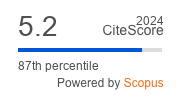Article | Open Access
Does the EU Benefit From Increased Complexity? Capital Punishment in the Human Rights Regime
| Views: | 3098 | | | Downloads: | 2232 |
Abstract: This article questions how the EU has acted to increase the complexity of the human rights regime through the process of incorporating a new issue area into its scope and to what extent has it benefitted from that process. By examining the breadth of the regime complex, between 1991–2021, this research shows how UN bodies, regional organisations, and civil society associations increasingly consider the death penalty a human rights issue instead of an exclusively domestic legal one. The article draws on a comprehensive archival review tracing the process of reframing capital punishment, the actions undertaken by the EU contributing to this process, and the benefits it receives from increased regime complexity. This leads to an affirmative answer to the previous questions, arguing that the EU’s actions in its foreign policy, anti-death penalty stance, and promotion of civil society, facilitated a reconfiguration of the human rights regime complex towards the rejection of capital punishment. It also provides important insights into the limitations of the literature on EU actorness in the UN system, which trains its eye primarily on legal representation and member-state cooperation. While this applies to formal international organisations, characterising the post-1945 multilateral order, utilising the study of regime complexity provides a more precise assessment of EU action in the fragmented and increasingly informal institutions constituting global governance today.
Keywords: death penalty; EU; foreign policy; human rights; regime complexity; UN
Published:
© Robert Kissack. This is an open access article distributed under the terms of the Creative Commons Attribution 4.0 license (http://creativecommons.org/licenses/by/4.0), which permits any use, distribution, and reproduction of the work without further permission provided the original author(s) and source are credited.


